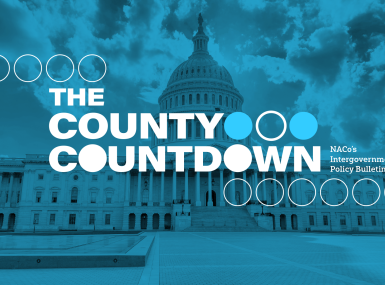White House OMB releases final revisions federal Uniform Guidance (2 CFR Part 200)
Author

Paige Mellerio
Upcoming Events
Related News

Key Takeaways
On April 4, the White House Office of Management and Budget (OMB) released its final revisions to the federal Uniform Guidance (2 CFR Part 200) that outline compliance and reporting requirements for federal financial assistance, such as grants and loans.
Why do counties care?
As the recipient of billions of federal dollars each fiscal year, counties must comply with these regulations when investing, reporting and auditing federal funds. However, compliance with the Uniform Guidance can be burdensome, especially for smaller, often rural, counties.
- Example: Counties must comply with the procurement policies detailed in the federal uniform guidance wheninvesting ARPA State and Local Fiscal Recovery Funds (SLFRF)
How did we get here?
In October 2023 OMB unveiled proposed revisions following a Request for Information (RFI) published in February 2023 seeking feedback from stakeholders on the federal Uniform Guidance generally.
- Read NACo’s comments in partnership with the Government Finance Officers Association (GFOA), National League of Cities (NLC) and the National Institute of Government Purchasing (NIGP) here.
Prior to these final revisions, federal Uniform Guidance has been implemented through an interim final rule published in December 2014 that was further revised in 2020.
Key highlights of finalized uniform guidance
These finalized revisions to federal Uniform Guidance are intended to reduce administrative burden on both federal grant awarding agencies and grant recipients through streamlining the process and to reduce barriers of entry to federal grants and other forms of financial assistance.
Key highlights include:
- Revised Notice of Funding Opportunity (NOFO) requirements for federal agencies to simplify and increase accessibility and clarity for applicants, including a revised NOFO template
- Clarification and plain language revisions to certain terms and definitions so that they are uniformly interpreted, such as the term “federal financial assistance”
- Increase of the Single Audit threshold from $750,000 to $1 million and the threshold for determining “equipment”
Next steps
OMB issued an implementation guide for federal agencies to put these revisions into practice by the start of Fiscal Year (FY) 2025 or October 1, 2024.
- This includes a requirement that federal agencies update and improve the new Federal Program Inventory (FPI) tool where counties and other non-Federal entities can locate comprehensive information about federal grant, loan and financial assistance opportunities
Federal agencies have until May 15 to submit their plan for implementation.
A full NACo analysis of the revised uniform guidance is forthcoming.
Webinar
ARP State and Local Fiscal Recovery Fund Update: Treasury Compliance and Reporting Requirements
The U.S. Department of Treasury recently released reporting and compliance guidance for the State and Local Fiscal Recovery Fund (Recovery Fund). The Recovery Fund, authorized under the American Rescue Plan Act, provides $65.1 billion in direct and flexible aid to every county in America as well as offers opportunities for crucial investments in local communities. Join NACo for a webinar where participants will hear an overview of the new reporting guidance and how counties can ensure they are complying with these new guidelines.

Related News

Senators introduce bipartisan UPGRADE Act to support small and rural public water systems
On December 15, Sens. Lisa Blunt Rochester (D-Del.) and Roger Wicker (R-Miss.) introduced the Unincorporated Partnerships for Grant Resources, Assistance, and Drinking Water Enhancements (UPGRADE) Act (S. 3465), a bipartisan bill that would strengthen federal support for small public water systems and helps unincorporated communities access clean and affordable water.

House reintroduces bipartisan legislation to level playing field for rural communities
House reintroduced the Rural Partnership and Prosperity Act, bipartisan legislation intended to advance economic development in rural counties and overcome barriers to obtaining federal funding and resources.

County Countdown – Dec. 15, 2025
Every other week, NACo's County Countdown reviews top federal policy advocacy items with an eye towards counties and the intergovernmental partnership.